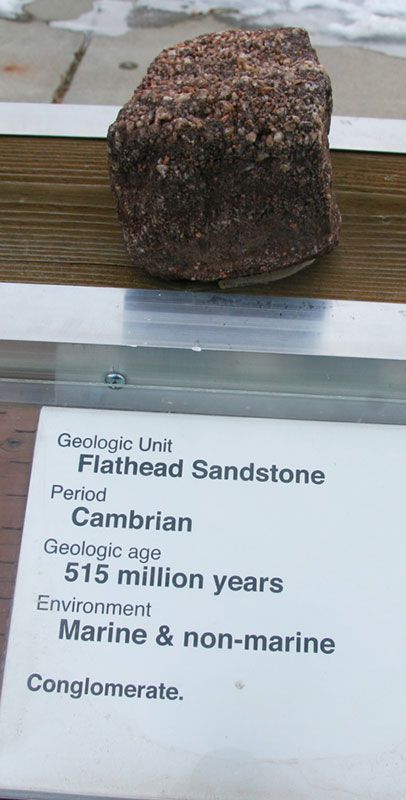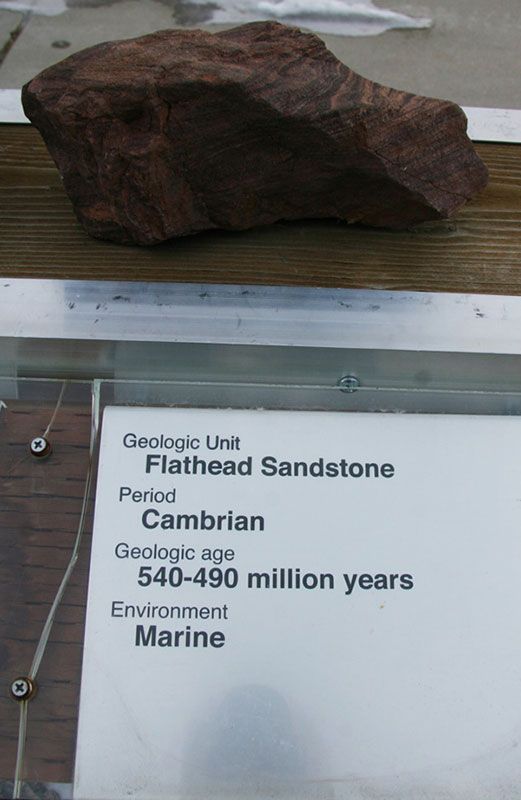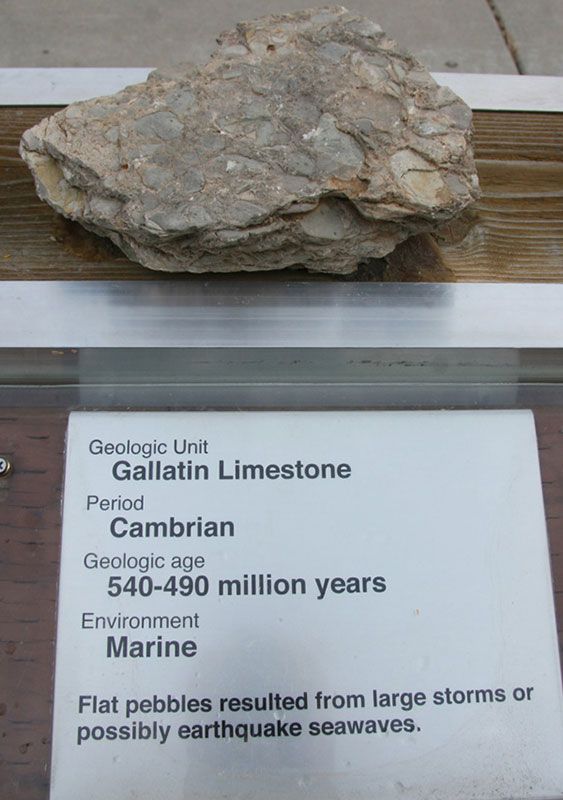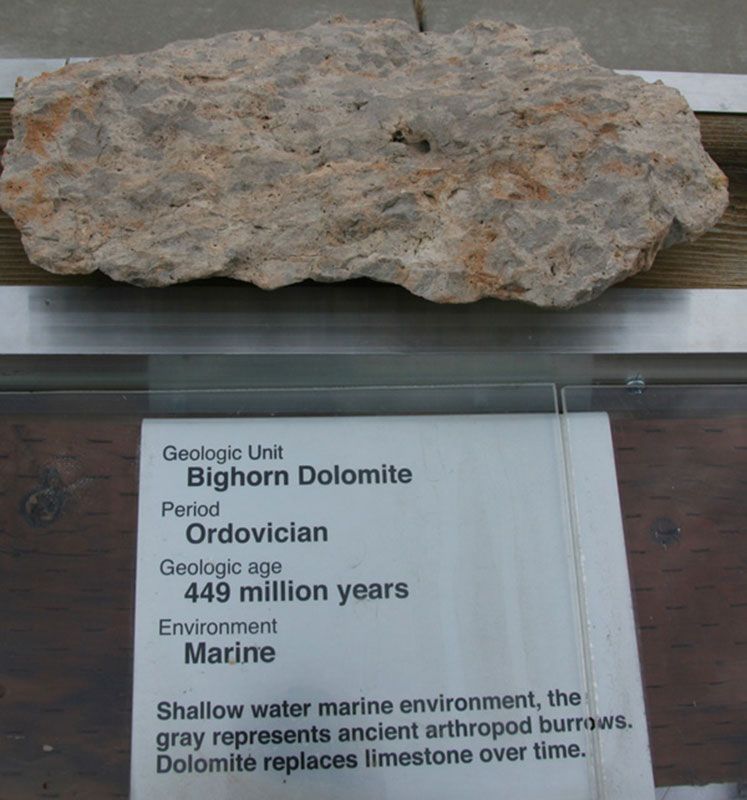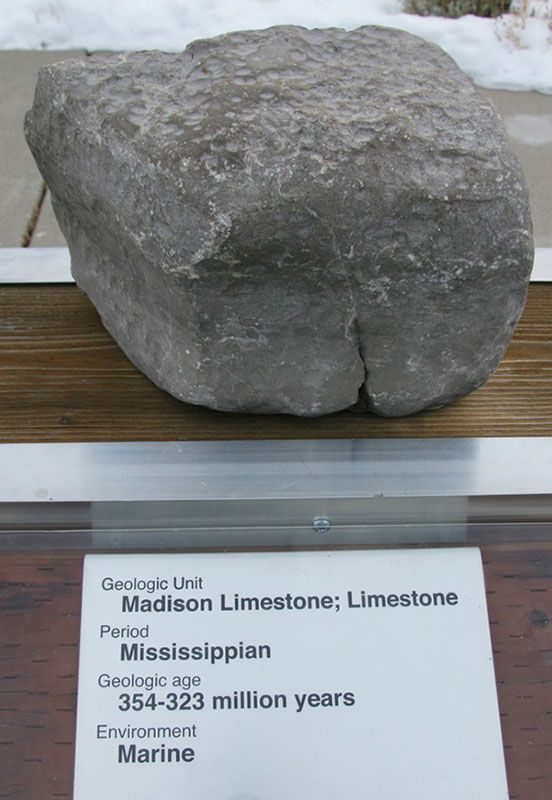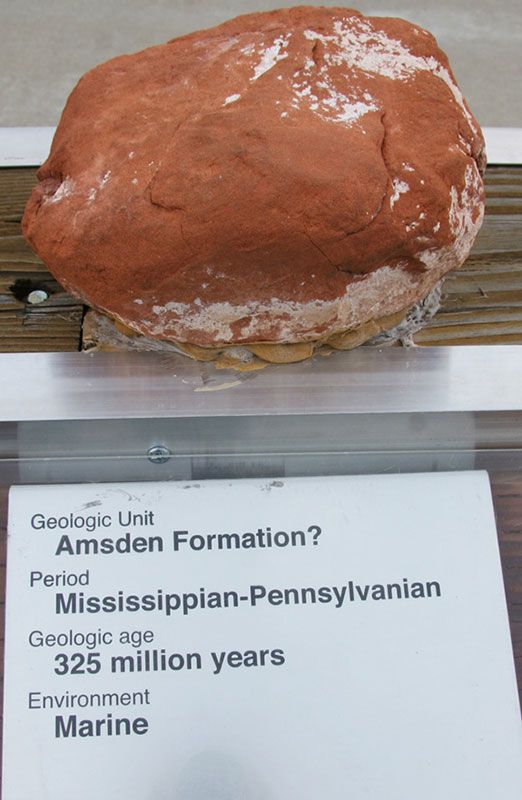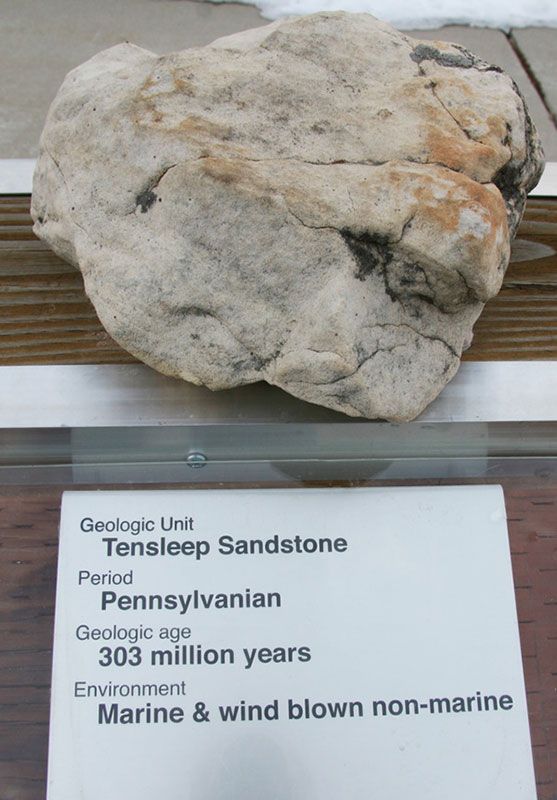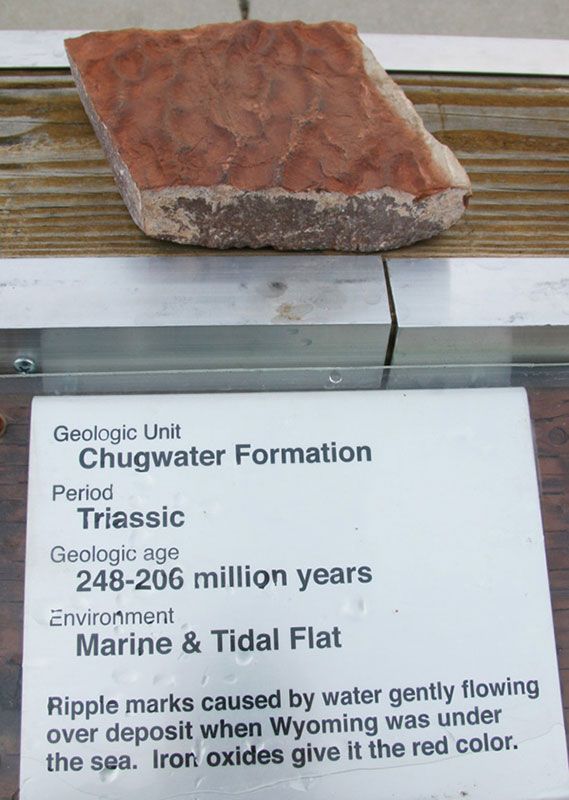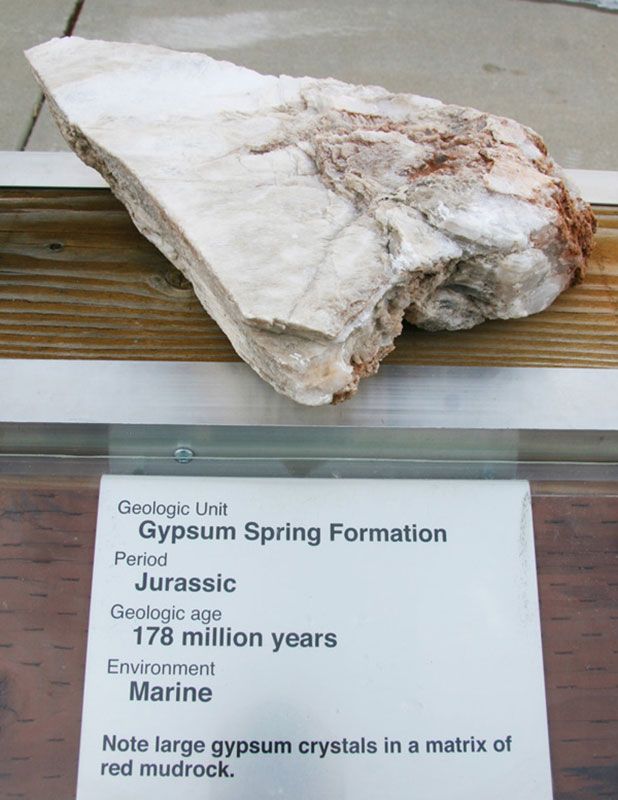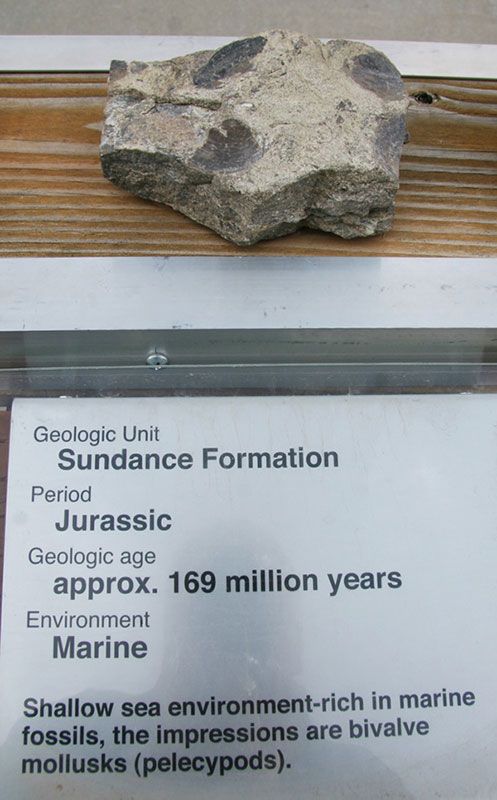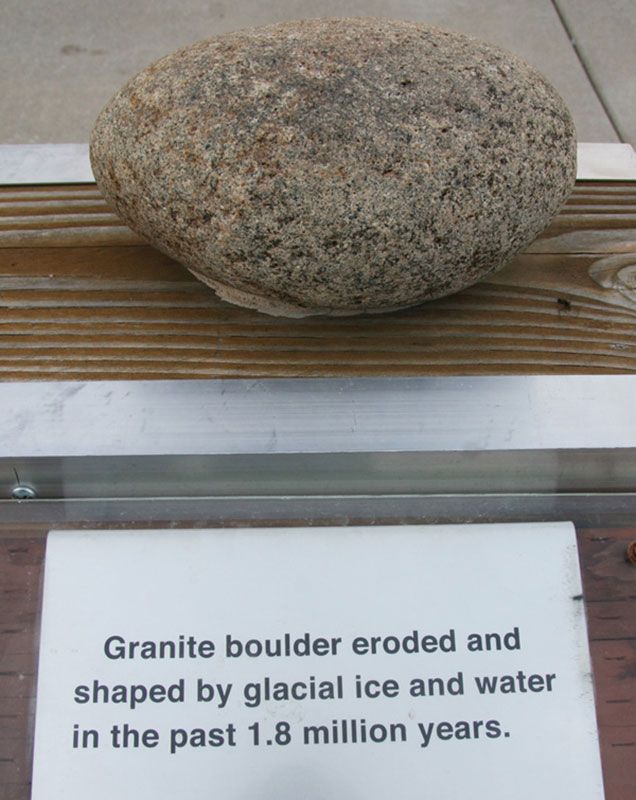Traveling through Sinks Canyon one can see billions of years of geologic history of the Wind River Range and Basin.
The earliest and longest record of Wyoming’s complex geological history is in the igneous and metamorphic rocks of the Precambrian Era. These “basement” rocks were formed and reformed by heat and pressure. From the top of the Loop Road you can see the Continental Divide and Wind River Peak made up of Precambrian granite some of which is over 4 billion years old.
For much of its geologic history what is now Wyoming was covered by sea water. For millions of years, through the Paleozoic and most of the Mesozoic Eras, this area was on the western edge of a continental platform near the equator, especially in the earliest Paleozoic. The seas came in and went out depositing an ever thickening sequence of marine and non-marine sediments over the Precambrian rocks. Many of these sedimentary layers are visible in Sinks Canyon.
During the late Cretaceous and Tertiary periods there occurred uplift and erosion of the Rocky Mountains caused by Plate Tectonics. The long buried Precambrian rocks and overlying sedimentary rocks were exposed by erosion to create the basic mountain and basin topography we see today.
The most recent major geologic event was the carving and shaping of the Wind River Mountains and the creation of Sinks Canyon by massive glaciers, associated meltwater and recent stream activity.
The rock samples below were taken from the canyon and show the geologic formations from the high peaks of the Wind River Range to just outside of Lander, a cross section of billions of years of geologic history from the oldest rock to the youngest.
Thanks to Hope Mullally, Donald Zenger and the University of Missouri Geology Camp for help with this display.


